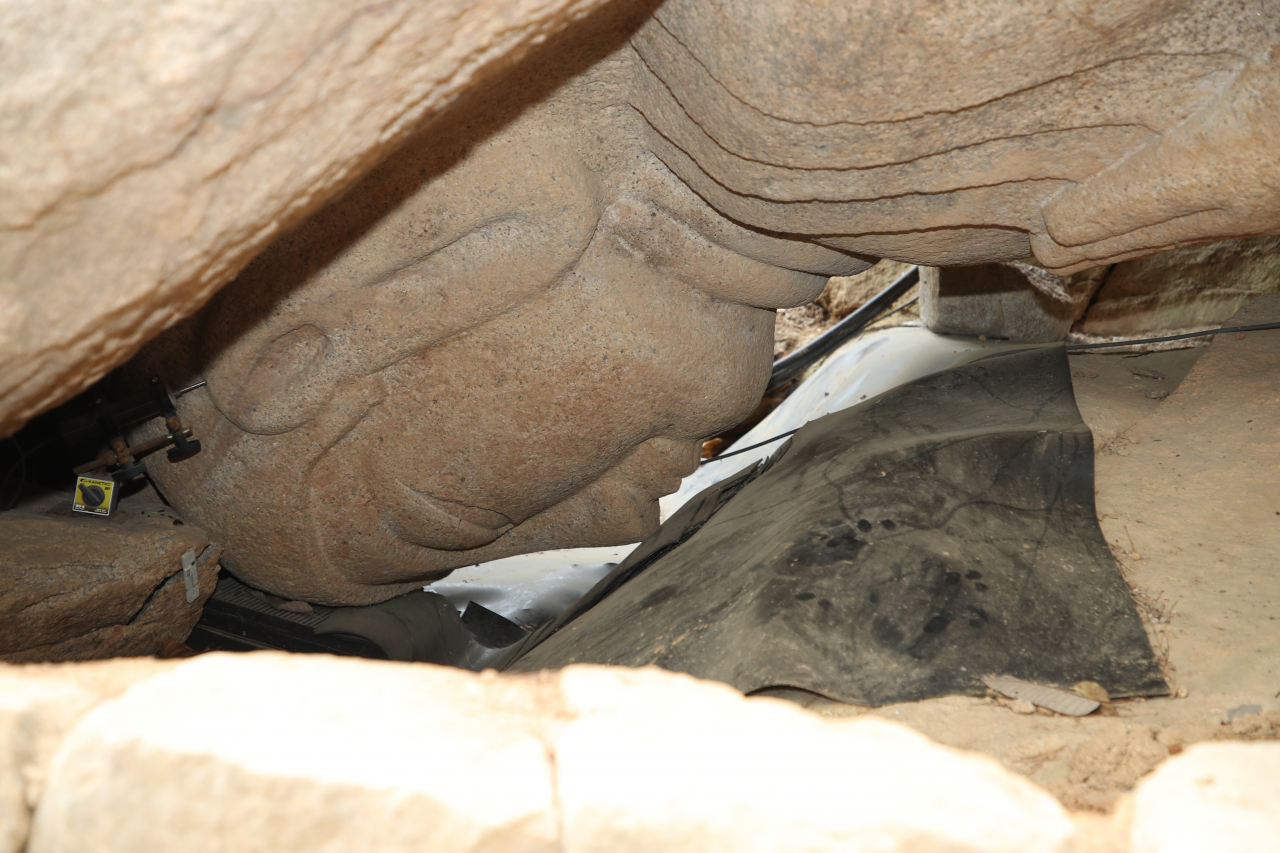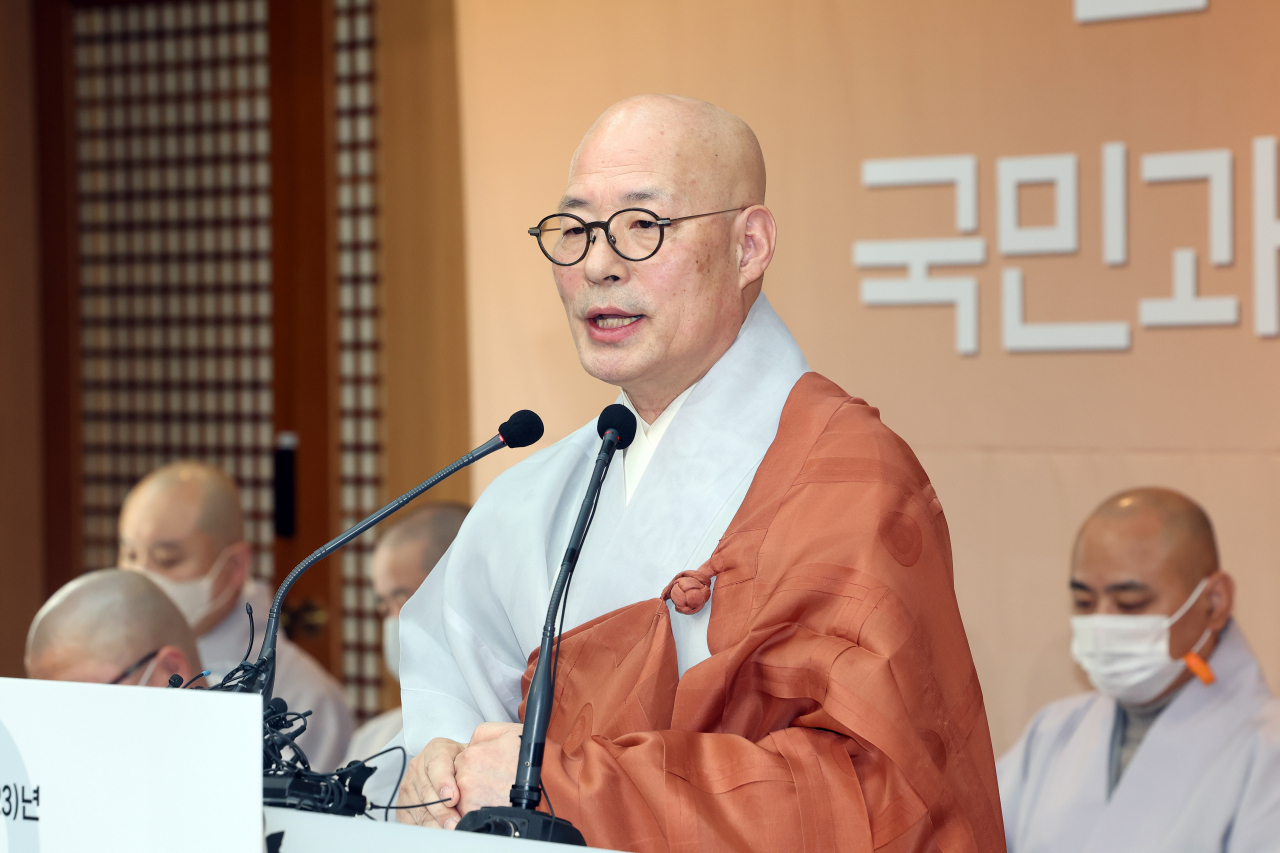 |
A photo of a fallen down rock-carved Buddha statue in Gyeongju, North Gyeongsang Province, taken in 2021 (Jogye Order of Korean Buddhism) |
A 1,300-year-old rock-carved Buddha statue in Gyeongju’s Namsan, discovered with its face down a mere 5 centimeters away from a giant rock, is to be reerected, the Jogye Order of Korean Buddhism announced Wednesday.
The Jogye Order announced the Maaebul restoration project during its New Year’s press conference held at the Korean Buddhism History and Culture Memorial Hall in Jongno, central Seoul, on Wednesday.
"The Buddha (statue) spent a thousand years lying face down, to bear the sufferings of the people," the Ven. Jinwoo, president of the Jogye Order, said.
"Erecting the Buddha means raising up ourselves, and this will become a holy Buddhist service that restores the nature in all of us."
Maaebul was discovered in May 2007 by the Gyeongju National Research Institute of Cultural Heritage while investigating the vicinity of the seated stone Buddha at Yeolamgok Temple site in Gyeongju, North Gyeongsang Province. Studies have shown that a 6.4 magnitude earthquake that hit the region in 1430 resulted in the Maaebul's tumble.
The Cultural Heritage Administration and Gyeongju City will be in charge of the restoration plan, which is expected to be completed by 2025.
Studies on how to preserve and manage the statue are expected to be finished this summer, including those concerning where the statue should be moved.
 |
The Ven. Jinwoo, president of the Jogye Order of Korean Buddhism, speaks at a press conference on Wednesday in Jongno-gu, central Seoul. (Yonhap) |
A CHA senior researcher told The Korea Herald Thursday that the Maaebul is located on a 45-degree steep slope and pointed out the need for a thorough review to ensure its safety.
"Minor cracks have been found in the Buddha statue, and there is no precedent of moving a relic that weighs over 80 metric tons," said the official.
A simulation using a model of the same size will be carried out next year, according to the official.
"Gyeongju and Pohang had an earthquake in 2016 and 2017, respectively, and there were bigger earthquakes in the past. When reerecting the statue, we have to make sure that the statue is set up in a spot that is safe against natural disasters," the official said.







